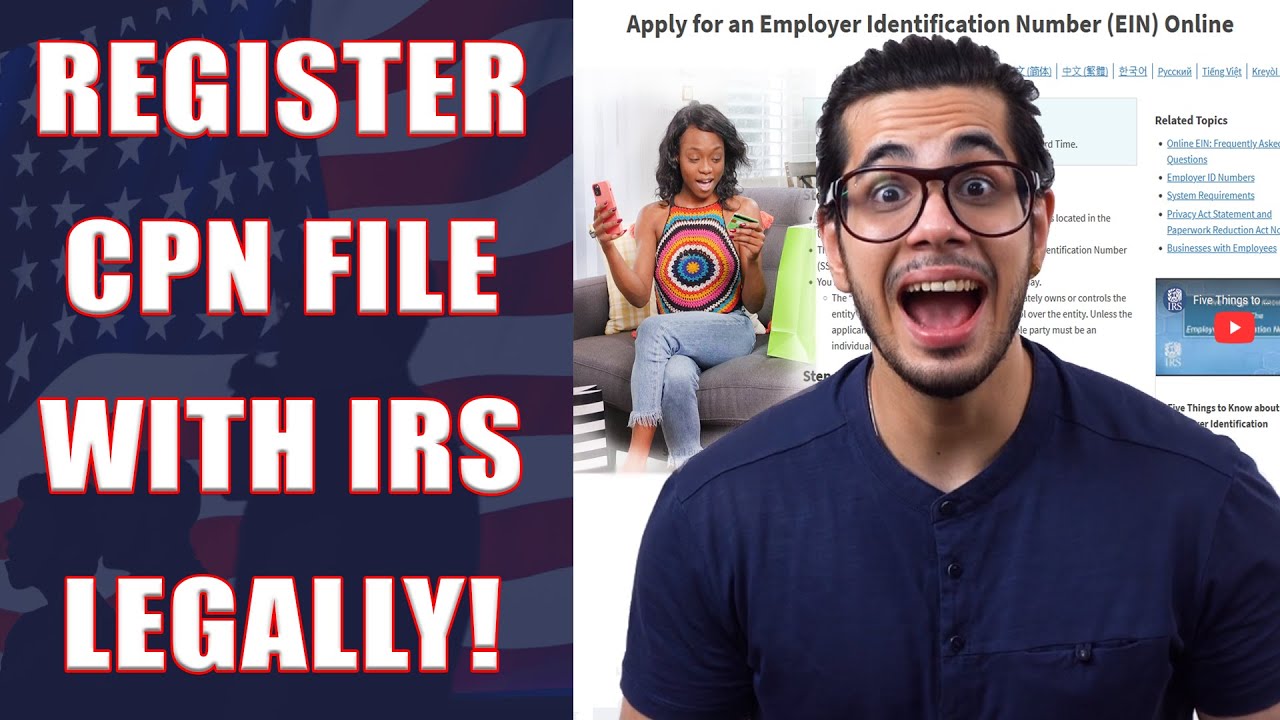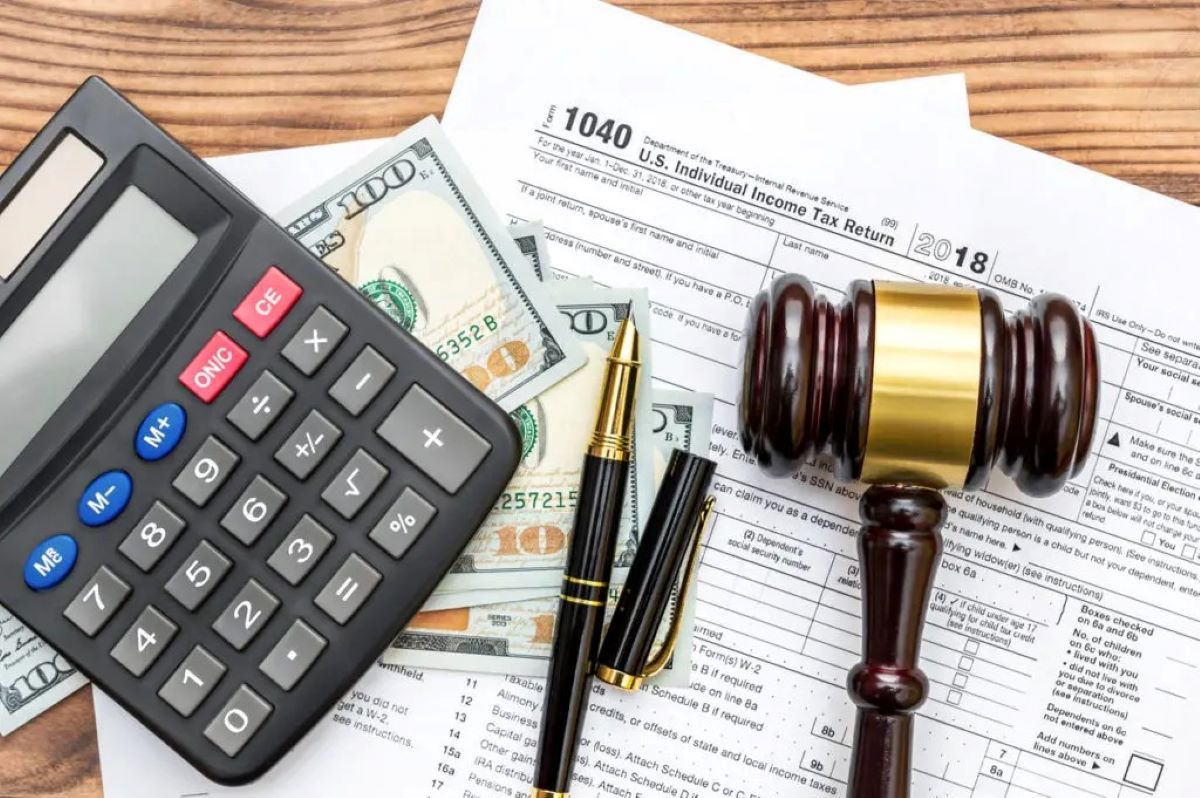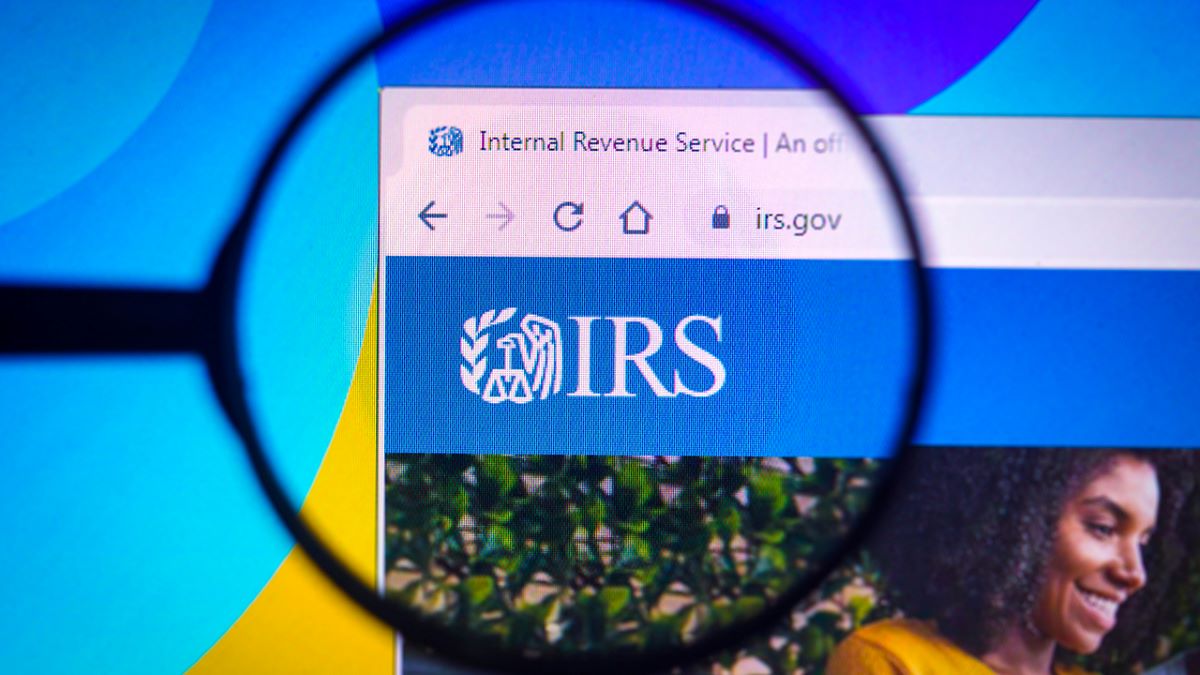

Finance
How To Register CPN With The IRS
Published: October 30, 2023
Learn how to register a CPN with the IRS and manage your finances effectively. Follow our step-by-step guide for a seamless process.
(Many of the links in this article redirect to a specific reviewed product. Your purchase of these products through affiliate links helps to generate commission for LiveWell, at no extra cost. Learn more)
Table of Contents
Overview
Registering for a CPN (Credit Profile Number) with the IRS (Internal Revenue Service) can be a crucial step for individuals looking to build or repair their credit history. A CPN is a unique nine-digit number used in place of a Social Security Number (SSN) for financial transactions such as opening bank accounts or applying for credit.
The process of registering a CPN with the IRS may seem daunting at first, but with the right guidance, it can be relatively straightforward. This article will walk you through the steps to successfully register your CPN with the IRS, allowing you to start building your credit and improving your financial standing.
Before diving into the steps, it’s essential to note that a CPN should not be used for illegal purposes, such as evading taxes or applying for government benefits. It is intended solely for legitimate financial activities.
Now, let’s get started on the process of registering your CPN with the IRS.
Step 1: Gather Required Documents
Before you begin the process of registering your CPN with the IRS, it’s important to gather all the necessary documents to ensure a smooth application process. Here are the essential documents you’ll need:
- Proof of identity: This can be a valid passport, driver’s license, or state-issued identification card. Make sure the document is current and not expired.
- Proof of address: You’ll need to provide a document that verifies your current address, such as a utility bill, bank statement, or lease agreement.
- Social Security Number (SSN) denial letter: In order to obtain a CPN, you must have a valid reason for not having a Social Security Number. You’ll need to request a denial letter from the Social Security Administration to prove your eligibility for a CPN.
- Proof of legal presence: If you’re an immigrant, you’ll need to provide documentation proving your legal status in the United States, such as a permanent resident card (green card) or work visa.
- Other supporting documents: Depending on your specific circumstances, you may need additional documents, such as a birth certificate or marriage certificate, to further establish your identity.
It’s important to have both physical copies and scanned copies of these documents, as you may be required to submit them electronically during the application process.
Remember to double-check that all your documents are up to date and accurate, as any discrepancies or outdated information could delay or complicate your application.
Step 2: Obtain an EIN from the IRS
Once you have gathered all the necessary documents, the next step in registering your CPN with the IRS is to obtain an Employer Identification Number (EIN). An EIN is a unique nine-digit number issued by the IRS to identify businesses and other entities for tax purposes.
Obtaining an EIN is essential because your CPN will be linked to this number, allowing you to establish credit in a way that is separate from your personal credit history. Here’s how you can obtain an EIN:
- Visit the IRS website: Go to the IRS website (www.irs.gov) and navigate to the section for obtaining an EIN.
- Choose the appropriate application method: Select the method that best suits your situation. You can apply online, by mail, or by fax.
- Complete the application: Provide the necessary information, including your personal details and the purpose for obtaining an EIN. If you’re applying for a CPN, indicate that you are applying as an individual.
- Submit the application: Once you have completed the application, follow the instructions to submit it online, by mail, or by fax, depending on the method you chose.
After submitting your application, you will receive your EIN from the IRS. It’s important to keep this number safe and secure, as it will be linked to your CPN and used for all financial transactions related to your credit building efforts.
Remember, the EIN is separate from your CPN and should not be confused as the same. While the EIN is used for tax purposes, the CPN is used specifically for credit-related activities.
Step 3: Complete Form SS-4
Once you have obtained your EIN, the next step in registering your CPN with the IRS is to complete Form SS-4. This form is used to apply for an individual taxpayer identification number (ITIN) or an employer identification number (EIN), which in this case, you will be applying for an EIN.
Completing Form SS-4 requires attention to detail and accurate information. Here are the steps to fill out the form:
- Download Form SS-4: Visit the IRS website (www.irs.gov) and search for Form SS-4. Download the form and save it to your computer.
- Provide your personal information: Fill in your name, address, and contact details in the appropriate sections of the form. Make sure the information matches the documents you gathered in Step 1.
- Indicate the type of entity: Under the “Type of Entity” section, check the box that indicates you are applying for an EIN as an individual.
- Provide your EIN: Enter the EIN you obtained in Step 2 in the designated field.
- Specify the reason for applying: Indicate that you are applying for an EIN to register your CPN by selecting the appropriate box related to credit purposes.
- Fill in additional information: Review the form and fill in any additional information that may be required, such as dates, signature, and contact information.
Ensure that you have thoroughly reviewed the form for accuracy and completeness before moving on to the next step. Any errors or missing information could result in delays or complications in the registration process.
Once you have completed Form SS-4, you are ready to submit it to the IRS for processing.
Step 4: Submit Form SS-4 to the IRS
After completing Form SS-4, the next step in registering your CPN with the IRS is to submit the form for processing. Follow these steps to ensure a smooth submission process:
- Make copies: Before submitting the form, make copies of the completed Form SS-4 for your records. It’s always a good idea to have a copy of all the documents you submit.
- Choose a submission method: You have a few options for submitting Form SS-4 to the IRS. You can mail it to the appropriate IRS address, fax it, or submit it online if you applied online for your EIN.
- Mail submission: If you choose to mail your form, double-check the appropriate IRS address to send it to. Ensure that the form is securely packaged and consider using a trackable mailing service for peace of mind.
- Fax submission: If you prefer to fax the form, find the correct fax number for the appropriate IRS office. Keep a fax confirmation or receipt as proof of submission.
- Online submission: If you applied for your EIN online, you may have the option to submit Form SS-4 electronically. Follow the instructions provided during the online application process to ensure a successful submission.
Regardless of the method you choose, it’s essential to retain proof of submission in case any issues arise. This can include a mailing receipt, fax confirmation, or confirmation email if submitting online.
Once the IRS receives your Form SS-4, they will process it and assign your CPN. The processing time can vary, so be patient and allow sufficient time for the IRS to complete their review.
It’s important to note that the IRS will not provide a physical CPN card or document. Your CPN will be associated with the EIN you obtained, so keep your EIN safe and use it as your identification for credit-related activities.
Step 5: Wait for Confirmation
After submitting Form SS-4 to the IRS, the next step in registering your CPN is to wait for confirmation. The processing time can vary, so it’s important to be patient during this stage. Here’s what you need to know:
Processing Time: The IRS typically processes Form SS-4 applications within a few weeks. However, during busy periods, it may take longer. It’s important to allow sufficient time for the IRS to review and approve your application.
Verification and Review: The IRS will carefully review your application for accuracy and completeness. They may conduct additional verification checks to ensure the validity of the information provided. This process may involve cross-referencing your documents and conducting background checks.
Notification: Once the IRS has processed your application and assigned your CPN, they will notify you of the confirmation. This can be done through email, mail, or online notifications, depending on the method of application used. It’s important to keep an eye out for any communication from the IRS regarding your CPN registration.
Follow-Up: If you haven’t received any confirmation within the expected processing time, you may need to follow up with the IRS. Contact the appropriate IRS office or customer service line to inquire about the status of your application. Have any relevant information, such as your EIN or submission details, ready when contacting them.
Remember, the IRS does not issue physical CPN cards or documents. Your CPN is linked to the EIN you obtained, so ensure you keep your EIN safe and accessible for any future credit-related activities.
While waiting for confirmation, you can take this time to familiarize yourself with how to utilize your CPN effectively.
Step 6: Utilize Your CPN
Now that you’ve successfully registered your CPN with the IRS, it’s time to put it to use and start building your credit history. Here are some key points to consider:
Understanding Credit: Familiarize yourself with how credit works and the factors that influence your credit score. This knowledge will help you make wise financial decisions and establish a positive credit history.
Apply for Credit: With your newly obtained CPN, you can now apply for various types of credit, such as credit cards, loans, or retail credit accounts. Make sure to research and choose reputable lenders that offer favorable terms and interest rates.
Make Timely Payments: Your payment history plays a significant role in building good credit. Pay your bills on time, including credit card payments, loan installments, and other financial obligations. Consistent and timely payments will demonstrate your reliability as a borrower.
Maintain Low Credit Utilization: Keep your credit utilization, which is the percentage of your available credit that you are using, at a low level. Aim to utilize no more than 30% of your available credit to show responsible credit management.
Monitor Your Credit Report: Regularly review your credit report to ensure its accuracy and to detect any unauthorized activity. You can request a free credit report from each of the major credit bureaus (Equifax, Experian, and TransUnion) annually.
Protect Your Personal Information: Safeguard your CPN and other personal information to prevent identity theft. Be cautious when sharing sensitive details and always choose secure and reputable online platforms for financial transactions.
Establish Positive Credit History: Develop a track record of responsible credit usage by maintaining a mix of different types of credit and consistently making timely payments. This will help you build a strong credit history over time.
Seek Professional Help if Needed: If you feel overwhelmed or unsure about managing your credit, consider consulting with a financial advisor or credit counseling agency. They can provide personalized guidance and help you develop a solid credit-building strategy.
Remember, building credit takes time and patience. The key is to make responsible financial decisions and demonstrate your creditworthiness to lenders. With your CPN and a proactive approach to credit management, you can work towards achieving your financial goals and improving your overall credit health.














